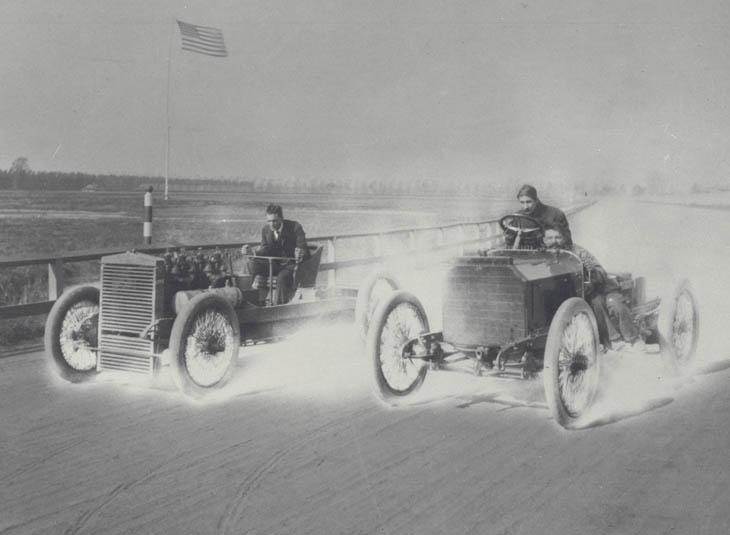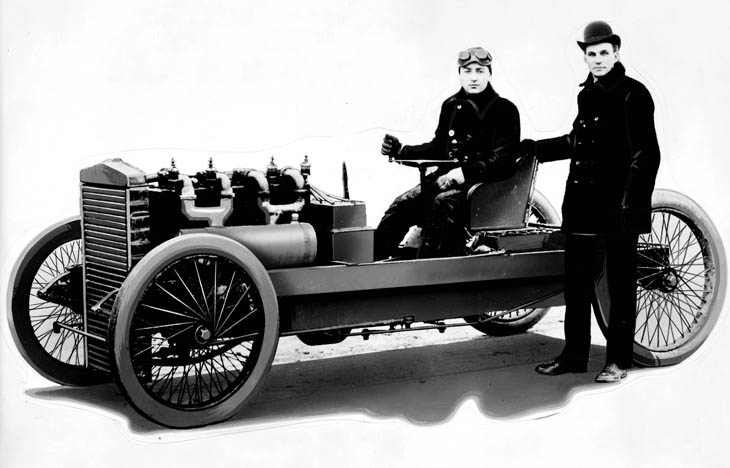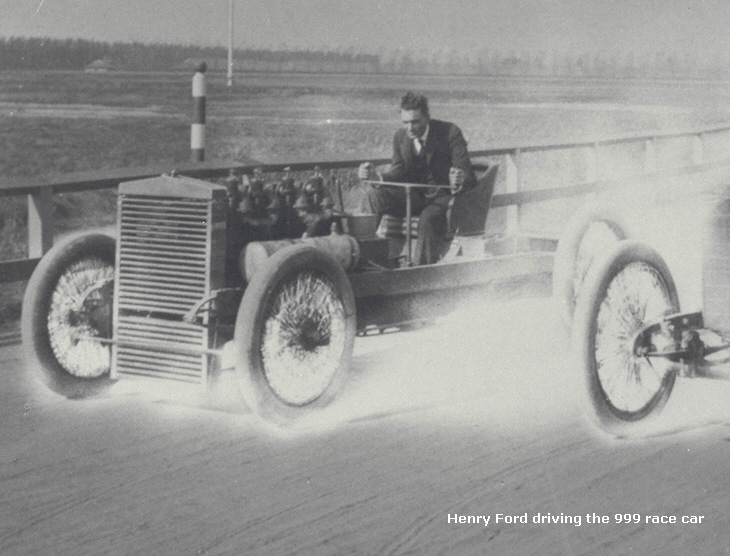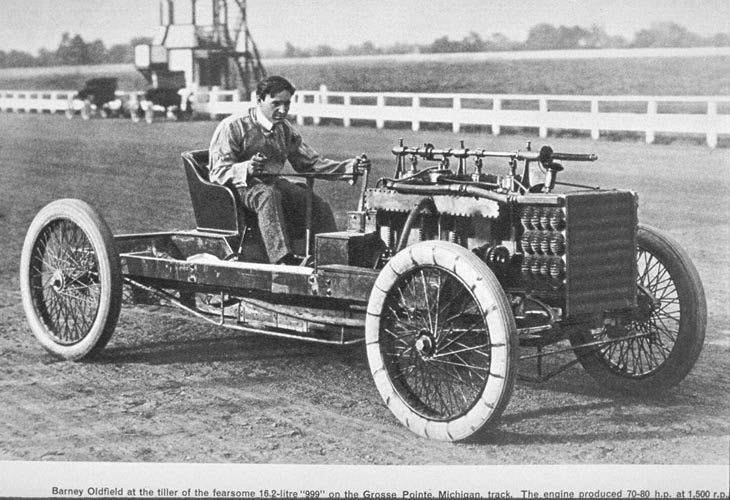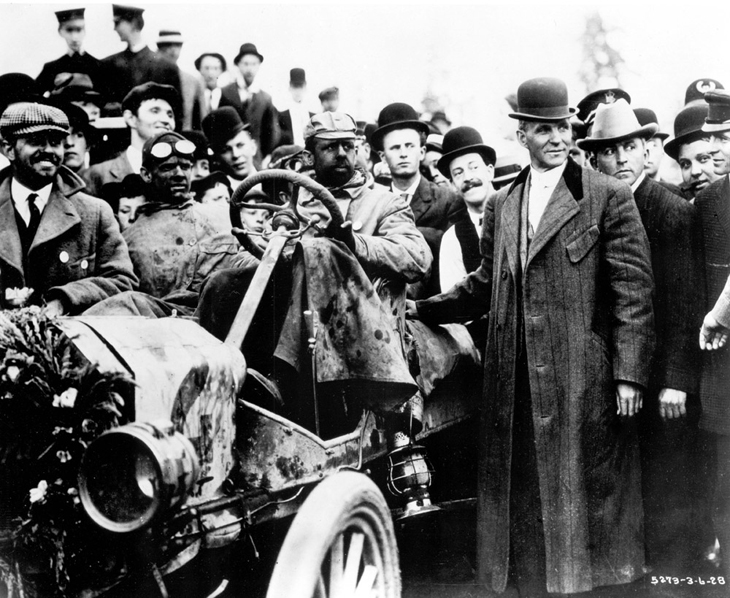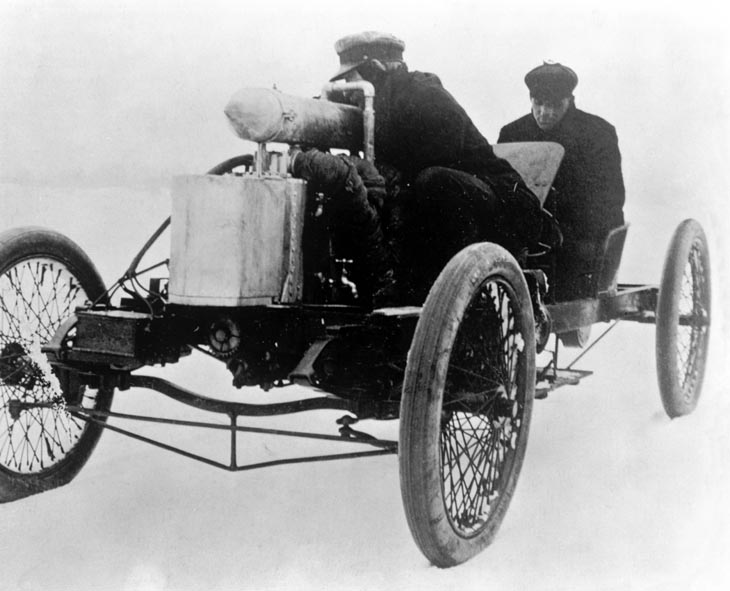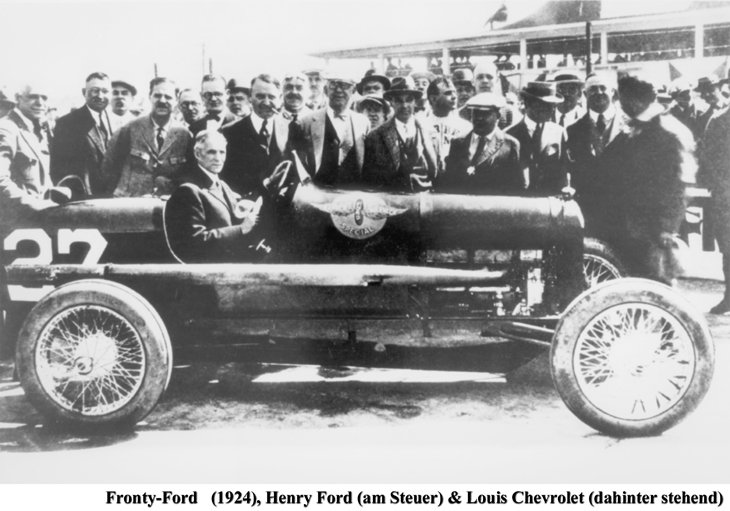|
|
|
Henry Ford and racing 1901 to 1913 Henry Ford was actively involved in auto racing from 1901 to 1913. His motive for entering the 1901 race against Alexander Winton, was to promote his name and reputation, as a means of attracting investors for a new auto manufacturing company. For a time he also was in it to make money, and after Ford Motor Company was founded in 1903, he used racing successes to advertise the attributes of his production vehicles. On November 30, 1901, less than two months after he won the race against Winton, Henry Ford and several partners founded the Henry Ford Company. However, there was friction between Ford and his partners almost from the beginning. For one thing, Ford was dissatisfied with his share of the company, and he wanted to continue racing, while his associates wanted him to focus on their production car development. Parts of a letter Ford wrote to his brother-in-law, Milton Bryant, in January, 1902, show his state of mind: The result was that Ford left the Henry Ford Company in March, 1902, with a $900 settlement and plans for a race car. Another factor in Ford's decision to leave the Henry Ford Company was the other stockholders' decision to bring in Henry M. Leland as an engineering advisor. Leland was one of the world's preeminent machinists of the day, but at the time Ford felt unable to work with him. A few months after Ford left, in August, 1902, the name of the company was changed to the Cadillac Automobile Company. In a further historical twist, Henry Leland resigned from Cadillac in 1917 and formed the Lincoln Motor Company, which Henry Ford bought in 1922. The 999 In May, 1902, Ford and Tom Cooper, a prominent bicycle racer, along with several assistants, began building the cars named 999 (painted yellow) and Arrow (painted red, also known as the Red Devil). Originally, these cars could be differentiated by their intake manifolds (the 999 had right-angle bends in the runners, while the bends in the Arrow's manifold were more gentle and curving, which made this car the faster of the two). However, over the time they were raced, parts and paint were swapped between the two so often that precisely which car was which became obscured. These cars had inline four-cylinder engines, displacing 1,155.3 cubic inches (7.25 in bore, 7-in. stroke), developing somewhere between 70 and 100 horsepower. The flywheel weighed 230 pounds, and was connected to the rear axle through a wooden-block clutch and a solid shaft (no universal joints), that terminated in a ring and pinion gear (no differential) to transmit power to the rear wheels. The driver steered with an iron bar that pivoted in the middle, and there was no rear suspension. Also, both the crankshaft and valve gear were exposed, so the driver not only was jolted by every ripple in the road, but also was continually sprayed by oil.
Henry Ford and driver Barney Oldfield posing with the legendary 999 race car. Oldfield drove the car to victory in the five-mile Manufacturers' Challenge Cup on Oct. 25, 1902, in Grosse Pointe, Michigan. Oldfield, a former bicycle racer, had never driven an automobile until a week before the race. Yet his daring driving and the 999's massive four cylinder, 1156 cubic-inch displacement, eighty-horsepower engine combined for an easy win over the heavily-favored Alexander Winton and three other cars.
Barney Oldfield in 999, the car that made him famous Barney Oldfield The 999's first race was a rematch with Winton at the Grosse Pointe track on Oct. 25, 1902. This was the race that launched the career of Barney Oldfield, a champion bicycle racer who had never driven a motor vehicle of any kind prior to his first run in the 999. That was about a week before the race, a five-mile event for the "Manufacturers' Challenge Cup." There were four cars in the race but Winton was the primary challenger, and nobody could stay with Oldfield. He won easily with a time of five minutes, 28 seconds, which set a record for a five-mile race on a closed course. Henry Ford's name is part of the legend of these cars, but in fact, during the time they were winning races and setting records, Ford owned no part of them. He sold his share to Tom Cooper after the first test session, which was a failure, about two weeks before the Winton race. Cooper owned the cars until 1904, when he sold them to Billy Pickens, a race promoter. However, Ford seems to have enjoyed promotional rights, especially when it came to using the vehicles and advertising their successes. After the October, 1902, race, Henry Ford focused his energies on establishing the Ford Motor Company, which was incorporated on June 16, 1903. The first production car, a two-cylinder Model A, was completed at the Mack Avenue Plant on July 23. During this time, Cooper and Oldfield were touring the country with the 999 and Arrow, winning races and setting speed records. Oldfield, his fame as an auto racer firmly established, switched to Winton during that summer. In September, 1903, Ed "Spider" Huff (Ford's riding mechanic in the 1901 race) and Frank Day drove the cars in the first race at the Wisconsin Fairgrounds. Unfortunately, Day crashed the Arrow and was killed. Record On The Ice The wrecked car was shipped back to Detroit, where Ford rebuilt it for a land speed record run on the ice of Lake St. Clair during the winter. That happened on Jan. 12, 1904, when Ford and Huff set a flying-mile record timed and sanctioned by the AAA of 91.37 mph. By this time, the car was being referred to variously as the "new 999" or the "Red Devil 999" in newspapers and advertising. Ford's record was broken by William K. Vanderbilt at Ormond Beach, Fla., less than a month later, but that was plenty of time to generate widespread publicity for Ford and his new company. Frank Kulick By the summer of 1904, Ford had a new driver, Frank Kulick, who started winning races in a car powered by a pair of two-cylinder Model A engines bolted together to form a flat four. The engine produced 20 horsepower, but the car was very light eventually down to 881 pounds. Kulick often beat much more powerful but also much heavier cars, and this was one of the first race cars to prove the advantage of a good power-to-weight ratio. In 1905, Ford developed a six-cylinder Model K race car to make land speed record attempts; for a variety of reasons, the car was never successful. In June, 1907, however, Kulick and Bert Lorimer drove a production version of the Model K in a 24-hour race for "stock" cars on a one-mile oval at the Detroit Fairgrounds. They covered 1,135 miles and won the event using two different cars, as was allowed by the rules. Kulick crashed the Model K race car at the Detroit Fairgrounds in Oct., 1907, and broke his leg in several places. Ford scrapped the Model K racer and declared a moratorium on building race cars that lasted until 1910. His decision to resume probably was influenced by the opening of the Indianapolis Motor Speedway in 1909.
Henry with Model T Transcontinental Race Team: Model T In the meantime, the Model T had been introduced in 1908, and less than a year later, in June, 1909, it finished first in the "ocean-to-ocean" New York-to-Seattle race, sponsored by Robert Guggenheim. Bert Scott and Jimmy Smith drove the provisional winner, but the car was disqualified because they had changed the engine (giving the win to a Shawmut). However, the several weeks that passed while the judges deliberated gave Ford ample time to reap the benefits of massive publicity and advertising. During 1910, 1911 and 1912, Frank Kulick won many races around the country in a stripped and reworked Model T, including a one-mile oval speed record at Detroit Fairgrounds in the fall of 1911, when he beat a Blitzen Benz with a time of 50 seconds flat. In 1913, Henry Ford tried to enter Kulick and the Model T record car in the Indianapolis 500. However, race officials required 1,000 pounds to be added to the car before they would accept his entry. Ford told them, "we're building race cars, not trucks" and pulled out. End Of The Beginning Shortly after that, Ford Motor Company withdrew from auto racing altogether. Ford cited dissatisfaction with the sport's rules and classifications, but this also was a time of extraordinary company growth, and the booming business demanded all of his attention. Business was so good that Ford didn't need publicity from racing any more. Also, race cars at that time were dangerous and fatalities were common, which could generate negative publicity. Ford Motor Company did not embark on another "factory" racing program until the 1950s, except for the unsuccessful Miller-Ford entries in the 1935 Indianapolis 500. While the company's direct involvement in racing may have ended for more than 20 years, the Model T and later the Ford flathead V8 ensured that, over a period of some four decades, Ford was the car and the engine of choice among grassroots racers across the country. Ford Racing Timeline (1901 to 1913)
Henry Ford at the wheel of the 999 race car.
(Henry Ford 1924) Related Story: Mercedes Simplex
|
|
Home < Ford Group < Ford Cars < History < Ford Motor Company History
|
